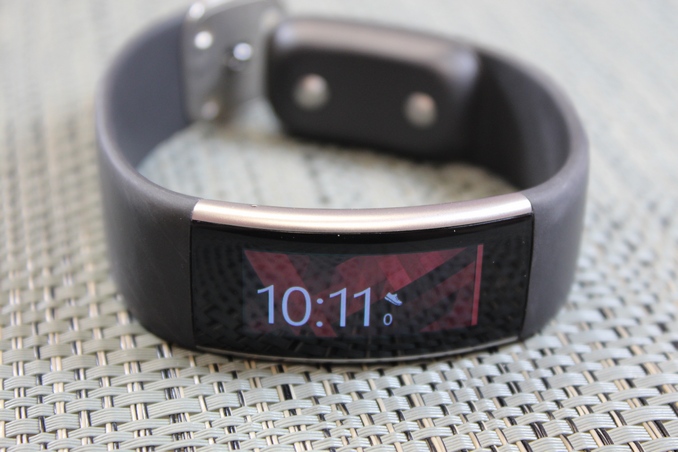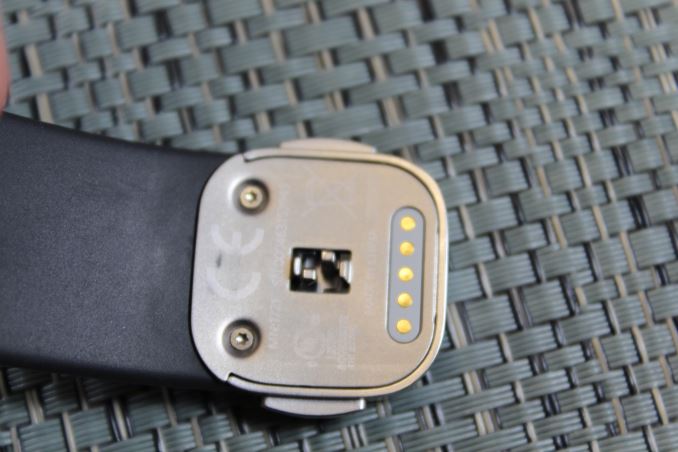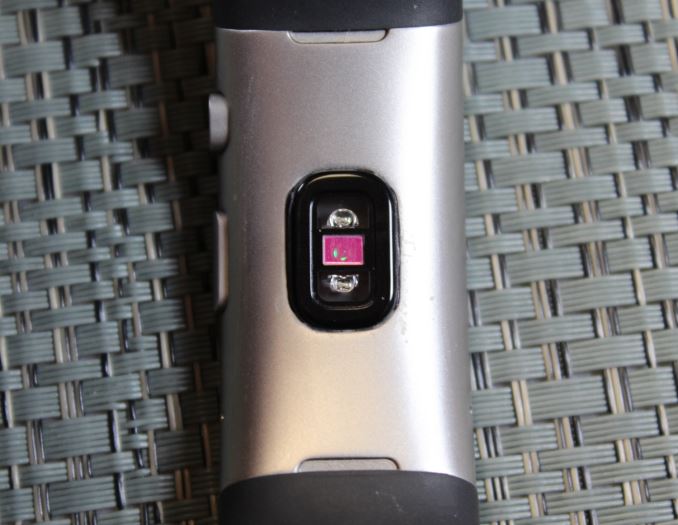The Microsoft Band 2 Review
by Brett Howse on November 30, 2015 8:00 AM EST- Posted in
- Wearables
- Microsoft
- Microsoft Health
- Microsoft Band

At the end of October in 2014, Microsoft surprisingly released a late night press release about a new device they were launching. It was the Microsoft Band, which is a fitness wearable that was a key component of their Microsoft Health service. It was their first real wearable, and it was packed with sensors to track everything from your heart rate to your sleep quality. At the Microsoft devices event in NYC on October 6th, Microsoft announced an updated version of the Band, known as Band 2. Its goal is to provide even more health insights, while being more comfortable and stylish than the original Band.
The first obvious question though is what the Microsoft Band actually is. In a time of everything from step counters to smart watches, where does the Band 2 (which will be called Band from here on out) fit in. Apple has the Apple Watch, Google has Android Wear, and Microsoft has the Band. But it’s not really a smartwatch, although it does do some of the things a smartwatch can do. It’s more than just a fitness band as well - it straddles the line of a 'smart fitness' band. You can do some of the things that a smartwatch can do, but not all, and it can do more things than most fitness bands. Like the Surface Pro 4 is a tablet that can replace your laptop, the Microsoft Band is a fitness band that can replace your smartwatch, except most probably do not have a smartwatch yet.
Design
The Band 2 makes some significant changes from the original, with the goal of a better fit, comfort, and improved ergonomics. It features a curved AMOLED display, which has a resolution of 320x128. This is a big improvement over the original band which had a flat display, and the new one does a much better job of fitting around your wrist than the original Band. Another nice change from the original band is that the entire display and surrounding bezel is now covered by Corning Gorilla Glass, which should alleviate the scratching that occurred on the original Band. Microsoft let me know that complaints of scratching on the display was almost always plastic bezels around the display, so the glass has been extended all the way to the edges as a result. The housing of the Band is now finished in silver metal, and keeps just two buttons on the side for actionable items. The large button in the center is power, and the smaller button on the side is the action button.
Another improvement over the original Band are the straps on the sides. On the first generation, Microsoft actually fitted the two 100 mAh batteries into the straps on the side, which made them kind of stiff, which is no longer the case this time around. In addition, the strap material is now a new material - a thermal plastic elastomer, silicone vulcanite. As with many materials, is comes across as a lot of big words, but the strap is a very smooth silicone rubber, and it doesn’t seem to get affected by sweat and oils on your arm. The clasp itself has not changed much, but it has the same silver finish as the main housing, and the battery has been moved to the lower half of the clasp. The upper clasp features a UV sensor, and the charging pins.
I feel like the design has come a long way from the original Band. The new curved display is the most obvious change, but the other design changes have also improved the overall look and especially feel of the Band on your wrist. The clasp is still fairly large, which might be an issue for some people. It would be nice to see a thinner clasp mechanism on a future version, although as this is where the battery is housed it may not be possible for a while.
| Microsoft Band Specifications | |||
| Microsoft Band 2 (2015) | Microsoft Band (2014) | ||
| Band | Thermal plastic elastomer silicone vulcanite with adjustable-fit clasp | Thermoplastic elastomer with adjustable-fit clasp | |
| Display | 12.8mm x 32mm AMOLED 320 x 128 pixels |
11mm x 33mm TFT 320 x 106 pixels |
|
| Sensors | Optical heart rate sensor 3-axis accelerometer/gyro Gyrometer GPS Ambient light sensor UV sensor Skin temperature sensor Capacitive sensor Galvanic skin response sensor Barometer |
Optical heart rate sensor 3-axis accelerometer/gyro Gyrometer GPS Ambient light sensor UV sensor Skin temperature sensor Capacitive sensor Galvanic skin response sensor |
|
| Additional Technology |
Microphone Haptic vibration Motor |
Microphone Haptic vibration Motor |
|
| Connectivity | Bluetooth 4.0 LE | Bluetooth 4.0 LE | |
| Compatibility | Windows Phone 8.1 Update, with Bluetooth 4.0 iOS 8.1.2 or later: iPhone: 4S, 5, 5C, 5S, 6, 6 Plus Many Android 4.3 – 5.0+ phones with Bluetooth |
Windows Phone 8.1 Update, with Bluetooth 4.0 iOS 7.1 or later: iPhone: 4S, 5, 5C, 5S, 6, 6 Plus Many Android 4.3 – 5.0+ phones with Bluetooth |
|
| Battery | Lithium-Polymer 48 hours | Dual 100mAh Lithium-Ion polymer 48 hours |
|
| Environment | Dust/Water | Dust and splash resistant | Dust and splash resistant |
| Temperature | 14°F to 104°F (-10°C to 40°C) |
14°F to 104°F (-10°C to 40°C) |
|
| Altitude | -300m to +4877m | 1200m | |
| Launch Price | $249 USD | $199 USD | |
The new Band has even added to the sensor total, with a barometer now available, serviced by a small hole in the side of the Band. Due to the holes for the barometer and microphone, the Band is not waterproof, although it is rated as water resistant. Internally, the holes have a fine mesh cloth which is fine enough to not let water through during temporary mild wet weather, but this is not enough protection for immersion such as swimming.
The Band itself is powered by a Cortex M4 processor. One would expect it might run Windows 10 IoT, at least with this version, but they still need a bit more power before they will move it to Windows 10, which is something to look for in the future. The UI is a custom specifically for the Band though, influenced by Windows 10 in its look and feel.













56 Comments
View All Comments
ronnybrendel - Tuesday, December 1, 2015 - link
Can you use Microsoft Band 2 with an Android Phone? If so, are there differences to using it with a windows phone?ronnybrendel - Tuesday, December 1, 2015 - link
nvm. I'm hesitant to install apps with that many permissions and upload my health data to someone elses computer.errorr - Friday, December 4, 2015 - link
The penalties for HIPAA violations are such that I assure you your info is much safer than most other types of cloud storage. MS has had to build Azure and Health from the ground up with HIPAA and HITECH restrictions in mind.This also includes a 30 day legal obligation to inform you of an accidental or malicious disclosure and comes with associated fines.
There is a whole bunch of info on their website about compliance and auditing...
Miller1331 - Tuesday, December 1, 2015 - link
Great review, maybe worth picking up in the holiday salessonci - Tuesday, December 1, 2015 - link
Why people say smartwatches are expensive, I got an Armani, its more expensive and it only shows time..designerfx - Tuesday, December 1, 2015 - link
So, garmin watch: 2-4 weeks battery life.Microsoft band: 48 hours.
Jawbone: 1 week +.
Why would anyone accept 48 hours again?
Spivonious - Friday, December 4, 2015 - link
GPS burns battery. Jawbone has no GPS, and Garmin is rated at 8 hours with GPS active.I have the Band 1 and with GPS going on a full charge, I can get 6-7 hours. 2-3 days if no GPS. Remember that this is a lot more than a pedometer.
beginner99 - Wednesday, December 2, 2015 - link
I will probably be one of the last person to buy such a thing, I was late to mobiles, late to Smartphones and also not really getting the smartwatch thing. To make this work for me, I want the wearable to be able to communicate with the phone over a pretty large distance, like 100-200 meters. Maybe that already works but AFAIK Bluetooth is limited to maybe 10 meters or so? Anyway, the point is that you can leave your ever larger phone lying in your office, backpack,...and get notifications and stuff without having to put the huge phone in your pocket. Same for fitness. I can put the phone in the locker and communication remains intact.marvdmartian - Wednesday, December 2, 2015 - link
Here's an improvement I didn't see, while skimming the article; a more robust charging port. A friend of mine went through three of the original MS bands, within a year's time. The sole reason was that the charging port kept going bad on the devices....and if you can't charge them, they're useless.And while I have no idea how this type of device stacks up against, say, a FitBit band, feature-wise, I do know that if they're close, chances are better that the FB band will be purchased, at a $75 to $150 price band, over a $250 MS band.
Spivonious - Friday, December 4, 2015 - link
I haven't had issues with mine (Band 1) and it's gone through the washing machine.